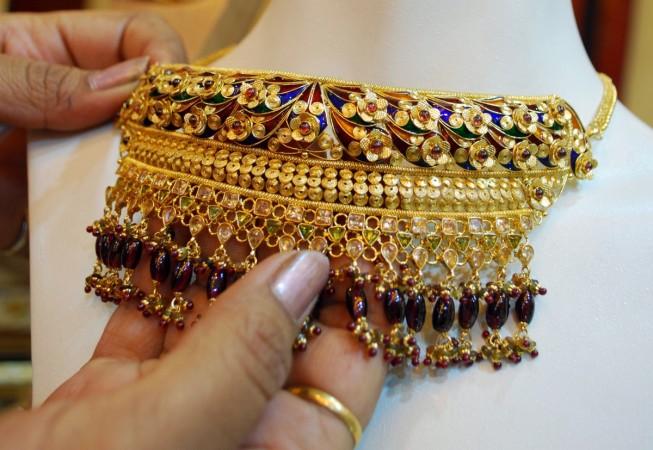
Gold prices registered a gain of about 5 percent in India during June, after witnessing wild fluctuations over global uncertainties, the biggest of them being fears of Britain leaving the European Union (EU), which were proved correct after the referendum results were announced on June 24. The yellow metal closed at Rs. 30,350 per 10 gm on June 30 as against Rs. 28,850 on May 31.
On the other hand, the BSE Sensex ended 1.25 percent higher, mostly due to a rebound during the last three-four days of the month, primarily on account of optimism driven by 7th Central Pay Commission (CPC).
Investors were driven to seek refuge in the safe-haven asset, first in the run-up to the referendum in Britain and then after the British voted to leave the 28-member bloc. Analysts even predicted the yellow metal to hit a high of Rs. 33,500 per 10 gm by the end of this (calendar) year.
Gold prices in India rose sharply between June 23 and June 24, from Rs. 29,670 per 10 gm to Rs. 30,885 on investors seeking refuge in the safe-haven metal but later receded as stock markets rebounded worldwide.
It remained above in the remaining days, despite analysts expecting the metal to correct in the coming days after having rallied in the run-up to Brexit uncertainty.
Silver prices too remained above the Rs. 40,000-per kg mark for most part of the post-Brexit week in India, with the metal closing at Rs. 42,910 on Thursday in Delhi.
In tandem, stock markets worldwide witnessed a free fall on Friday when the results of the referendum were announced. The BSE S&P Sensex plunged over 1,000 points on June 24 but later recovered to trim losses but still closed down 605 points. However, as global financial markets came to terms with the new reality and recovered slowly, the Sensex bounced back on a slew of positive triggers, the most important being the approval given to the recommendations of the 7th Central Pay Commission by the Narendra Modi government.
The Sensex closed at 26,999.72 on June 30, a gain of 1.25 percent over its May 31 closing of 26,667.
On July 1, the 30-scrip benchmark index ended 145 points higher at 27,145, while the NSE Nifty closed at 8,328.35, up 41 points.













